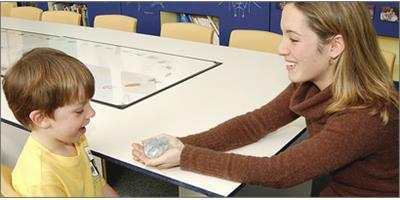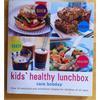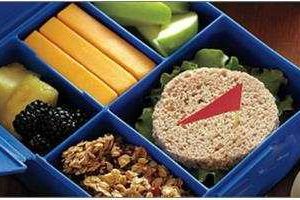As a Special Needs teacher for four years I worked with challenged children. Children with special needs benefit from sensory stimulation. In a sensory experience there is no right or wrong, no fear of failure for a little one who may have an awareness of limited physical functioning skills.
You can make a sensory input box or “Snoezelen Box” (the word Snoezelen combines two German words meaning investigating and relaxing) from materials easily found in the home or a dollar store. Think in terms of stimulating all five senses.
Sight:
If you can manage a small fish tank at home — a goldfish bowl will do — it is very soothing for Special Needs kids (and their parents) to just watch the fish gliding gracefully back and forth, the water plants swaying…almost hypnotic at times.
Food-based finger paint is great fun. You can use the shiny food flyers and paint with mayonaise, pudding, mustard (protect their clothes or be prepared to wash with mustard!), ketchup…and one of dad’s old shirts to cover the kid. And, no harm done if they want to taste their creations.
Sound:
The simplest instruments are the best. Pot lids, homemade shakers made with a plastic tub and raw beans, a rudimentary drum made with a large tupperware or margarine tub, a working bell which is metal and large enough to be safe, small cymbals. Or play classical music. Or Raffi or Sharon Lois and Bram (silly songs for kids). Sing with your child — especially songs that have accompanying actions or finger plays like Eensy Weensy Spider, Tommy Thumb, This Little Piggy are always popular. They won’t care if you have a great voice.
Touch:
Make your own playdough with flour, salt, water, food colouring and flavoured, scented koolaid (recipes abound on the internet). Warm from the pot, it has delightful sensory possibilities. You and your child can sculpt free form or use any kind of molds, such as cookie cutters to make lasting treasures.
Make your own touch-feely book. Get a large scrapbook and texturally interesting items like sandpaper, cloth scraps from a material store or old clothes such as velvet, baby blanket and fun fur. Paste one item onto each page (your child can help with this), then as you turn the pages of the book together, it is a time for discussing words and concepts like rough, bumpy, smooth, colours, polka dots, plaid, soft, squishy, worn.
Get an assortment of balls (available at the dollar store), like those odd-textured koosh balls, a stress-reducing hand-held ball which can be squeezed, balloons, a large beach ball or a stress-relieving exercise balls on which a child can sit when they get fidgety.
If the budget allows, a rocking chair or a large outside swing are wonderful (I got one at Walmart for $100 at the end of the season).
Taste:
Try to cook with your child once a week; simple things are fine. Home made bread is extremely easy to make, but if it is intimidating, it’s great to use a cake or cookie mix and add an egg or two. Children love to be involved in stirring, measuring, and don’t forget licking the spoon! You are teaching the most basic physics, and having fun at the same time. Or make fruit salad there are lots of opportunities to talk about colours, textures, plant parts (seeds, skin, pulp).
Smell:
All you need is some inexpensive and easy to use essential oils. Once I used orange essential oil in a diffuser, as I understood that this scent makes kids happy and the whole class started giggling. You can make your own scented bath oil for your child with two drops of orange and two drops of lavender essential oil in a shot glass full of grapeseed oil (available at the grocery store). Pour a little of this in the bath or a plastic tub and add some bubbles to make it even more fun. Water play is very therapeutic.
Christine Nightengale, B.A., C.H., R.M. (www.nightingalehealing.com) has been an Alternative therapist for 15 years and is a Certified Hypnotherapist.
The material provided here is for general information purposes only and is not medical advice. Readers should always seek professional medical advice or diagnosis from an appropriate, qualified and practicing medical physician.
Did That Help!? You Might Like These:
 |
 |
 |
| The Importance of Music Instruction for Children |
Back to School for Kids with Special Needs |





